Honda is now entering its fourth decade of developing and improving hybrid vehicles, since the revolutionary Insight, the first hybrid car to be launched in Europe in 1999. Over the past 25 years, Honda engineers have continued to refine this type of powertrain, and its fully electrified two-motor e:HEV powertrain can now be seen on Honda's mainstream models such as Jazz, Civic, HR-V, ZR-V and CR-V. Honda has always been at the forefront of hybrid technology with its commitment to technological innovation and improving vehicle efficiency, while also striving to bring benefits to society and never forgetting to give customers the "joy of driving". Since the launch of the first generation Civic in 1972, Honda has mainly focused on gasoline engines and has a wealth of expertise. Its lean burn technology significantly reduces harmful emissions. With the increase in environmental awareness in the late 1980s and early 1990s, Honda began to study gasoline-electric hybrid technology with the goal of creating the world's most efficient vehicle.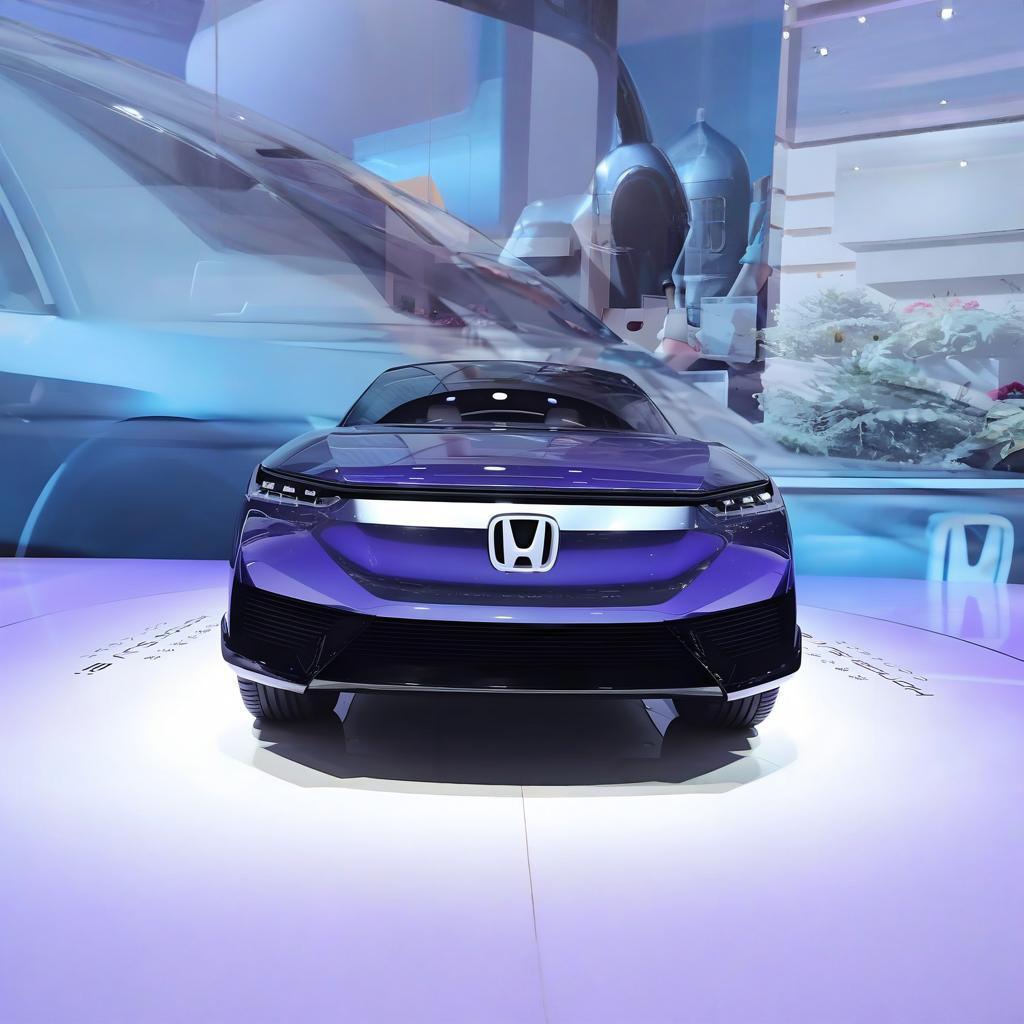 Honda's first production hybrid, the Insight, was launched in 1999 with a unique parallel hybrid Integrated Motor Assist (IMA) system that achieved fuel consumption of 3.4L/100km (83.1mpg on the NEDC cycle). Over the past 25 years, Honda has further refined its technology and developed a variety of hybrid architectures to meet different needs. In addition to the IMA system, Honda has also introduced the two-motor Intelligent Multi-Mode Drive (i-MMD) system, which is now used in European e:HEV models, and the three-motor Super Handling All-Wheel Drive (SH-AWD) system, which is equipped with the NSX.
Honda's first production hybrid, the Insight, was launched in 1999 with a unique parallel hybrid Integrated Motor Assist (IMA) system that achieved fuel consumption of 3.4L/100km (83.1mpg on the NEDC cycle). Over the past 25 years, Honda has further refined its technology and developed a variety of hybrid architectures to meet different needs. In addition to the IMA system, Honda has also introduced the two-motor Intelligent Multi-Mode Drive (i-MMD) system, which is now used in European e:HEV models, and the three-motor Super Handling All-Wheel Drive (SH-AWD) system, which is equipped with the NSX.
Honda's hybrid technology has reached its peak in motorsport. The brand returned to Formula 1 in 2015 as an engine supplier and won the World Drivers' Championship in 2021 with Max Verstappen and Oracle Red Bull Racing, marking Honda's first championship in the event since 1991. In 2022 and 2023, Honda continued to supply the power unit to help the team win both the driver and team championships. Today, Honda's latest e:HEV hybrid model bears witness to 25 years of research and development. It continues the tradition of its predecessors and provides excellent performance and agility, while maintaining smooth power delivery and excellent efficiency, without compromising on "driving pleasure".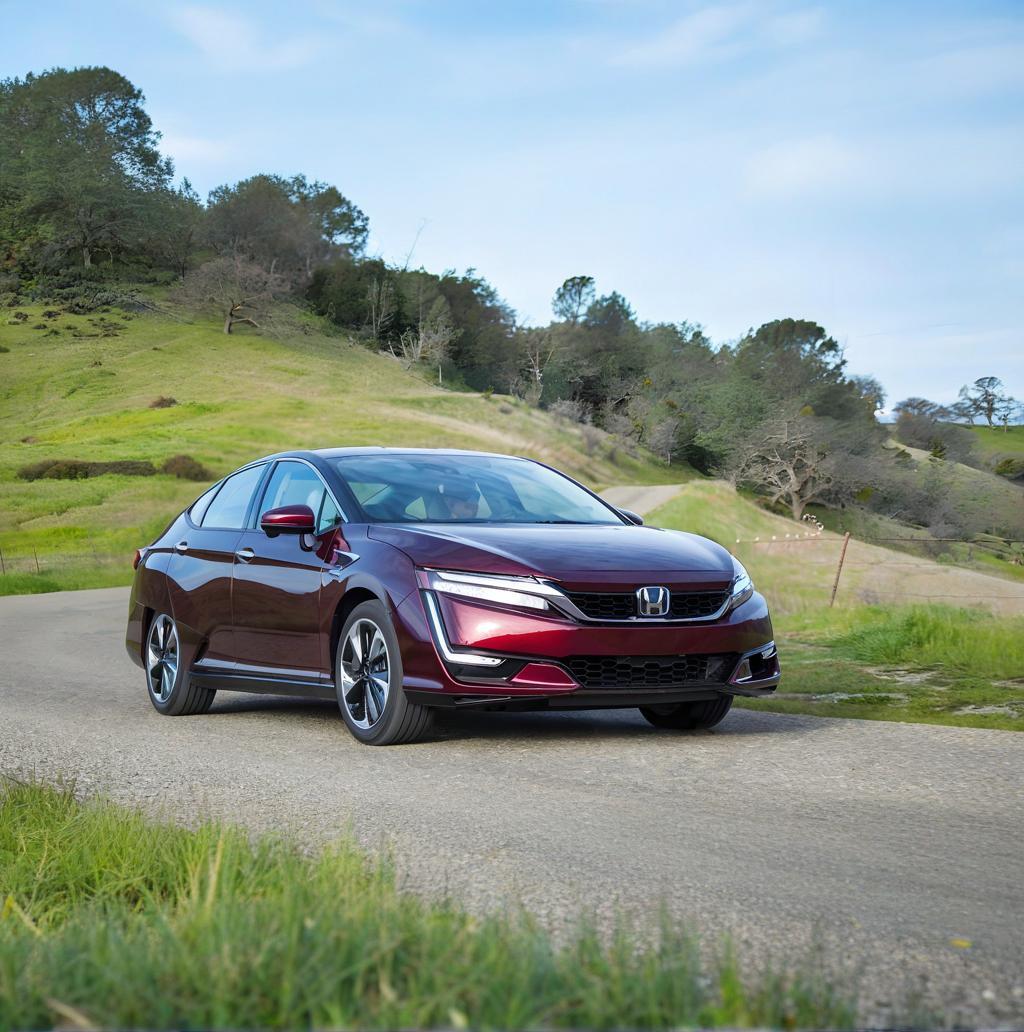 HONDA INSIGHT (1999)
HONDA INSIGHT (1999)
As the first hybrid car to be launched in Europe, the Honda Insight is undoubtedly a true pioneer. Its state-of-the-art power system, extremely low vehicle weight and excellent aerodynamic design make this two-seater sports car one of the most fuel-efficient cars in the world at the time, with a combined fuel consumption of 3.4 liters per 100 kilometers (83.1mpg).
This avant-garde sports car is equipped with Honda's leading IMA hybrid system, which gives the vehicle leading fuel efficiency and extremely low emissions in its class. The lightweight aluminum alloy body design of Insight gives it an ultra-low drag coefficient, allowing the vehicle to minimize wind resistance while driving. At the heart of the Insight is an extremely lightweight 1.0-litre three-cylinder petrol engine that uses advanced lean-burn technology, low-friction components and lightweight materials. Directly connected to the crankshaft of the internal combustion engine and driven through a five-speed manual transmission, the engine is equipped with an ultra-thin DC brushless electric motor. The motor is powered by a 144V nickel-metal hydride battery (weighing just 20kg) mounted in the floor of the trunk.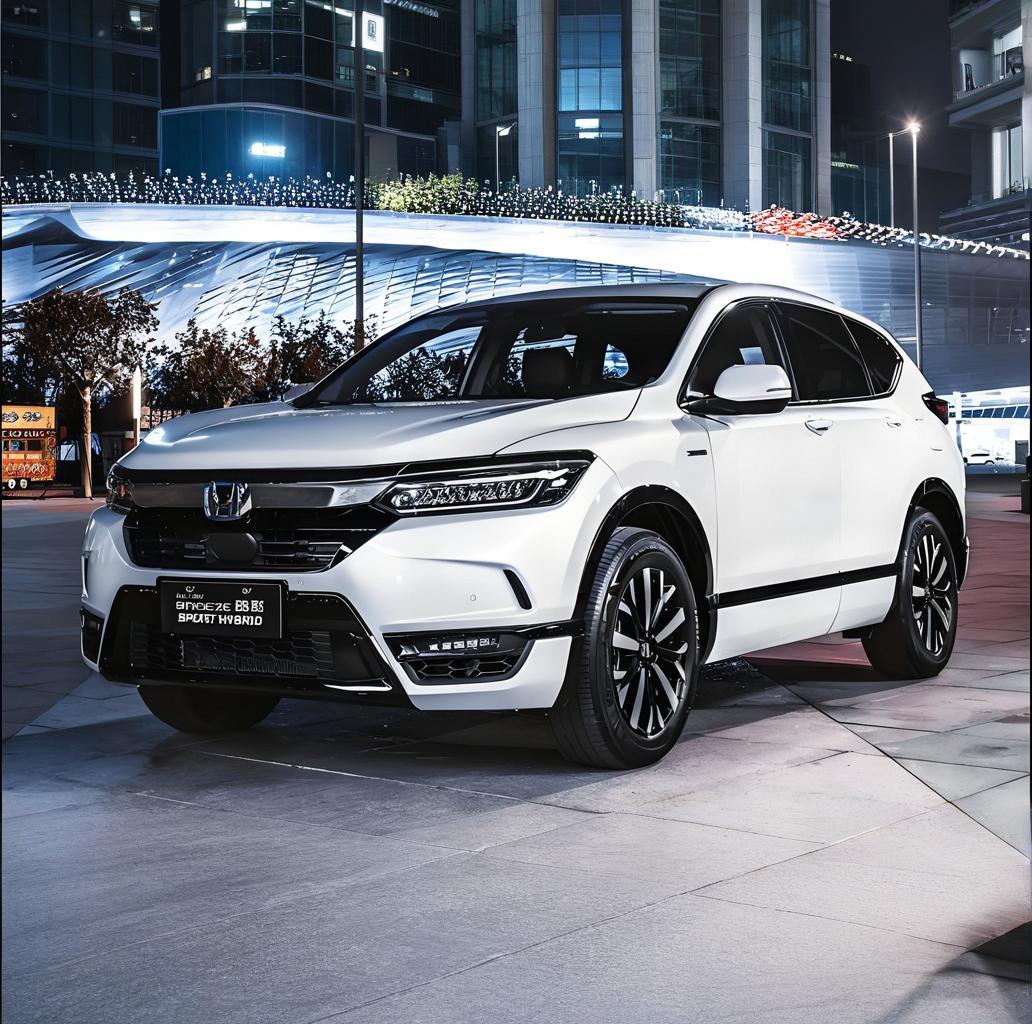 During acceleration, the electric motor boosts engine performance to the level of a 1.5-litre petrol engine, while during deceleration it acts as a generator to recharge the battery. In addition, the electric motor provides a stop-start system that shuts down the engine when the Insight is parked and automatically restarts the engine when it is started in first gear. The Insight was designed with low drag in mind, with a streamlined front, low body and long tapered roof, narrow rear track, rear wheel skirts and a flat bottom, resulting in a drag coefficient of just 0.25.
During acceleration, the electric motor boosts engine performance to the level of a 1.5-litre petrol engine, while during deceleration it acts as a generator to recharge the battery. In addition, the electric motor provides a stop-start system that shuts down the engine when the Insight is parked and automatically restarts the engine when it is started in first gear. The Insight was designed with low drag in mind, with a streamlined front, low body and long tapered roof, narrow rear track, rear wheel skirts and a flat bottom, resulting in a drag coefficient of just 0.25.
Honda pioneered aluminium body construction in the prototype NSX sports car (1990) and applied its experience to the Insight. The body is made of extruded, stamped and die-cast aluminium parts, making it 40% lighter than a steel body. Aluminium is also used for the exterior panels, except for the front fenders and rear wheel skirts, which are made from recyclable plastic composites. The vehicle weighs just 835kg (852kg including air conditioning).
When the Insight was unveiled in 1999, it was one of the most advanced vehicles on the road, with more than 300 patents registered during its development, including more than 60 related to the engine and IMA system, and more than 120 each for the electronic control unit (PCU) and body structure.
– Horsepower/Torque: 76PS/127Nm
– Acceleration (0-100km/h): 12.0 seconds
– Top speed: 180km/h
– Fuel consumption (NEDC) (l/100km)/CO2: 83.1mpg (3.4)/80g/km
– Vehicle weight: 835kg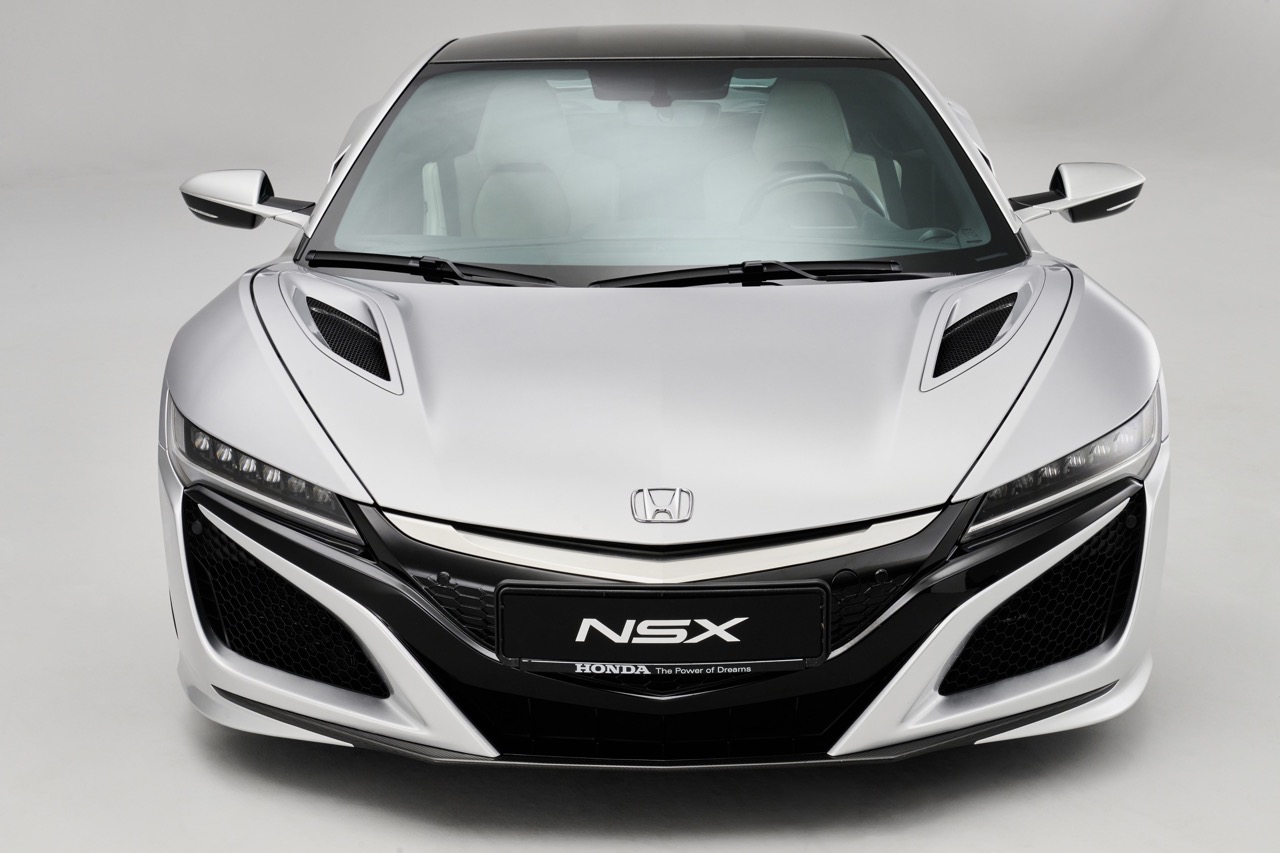 HONDA NSX (2016)
HONDA NSX (2016)
The 2016 Honda NSX is the pinnacle of Honda hybrid technology, featuring a revolutionary Super All-Wheel Drive (SH-AWD) system. This advanced hybrid system integrates electric and traditional fuel power sources to provide outstanding dynamic performance. At the heart of the NSX's hybrid system is a mid-mounted twin-turbocharged V6 engine, paired with a new nine-speed dual-clutch transmission (9DCT) and a direct-drive electric motor, which forms the rear power unit. In addition, the front dual motor unit (TMU) independently drives the left and right front wheels, achieving near-instantaneous acceleration and excellent handling.
The NSX’s power delivery system ensures smooth integration of electric and fuel power sources. The combined peak output of the twin-turbo 3.5-liter V6 engine and electric motor reaches 581PS, and the 9DCT further enhances this with its seamless gear-shifting capabilities. The transmission can be operated in automatic mode, selecting the most appropriate gear, or it can be manually controlled using the shift paddles on the steering wheel. The NSX also features Launch Mode Control, which utilizes the peak power of the TMU and the twin-turbo V6 engine after launch to achieve a perfect vehicle launch.
The NSX’s braking system is managed by a next-generation system that combines mechanical friction brakes with an electric servo-controlled and regenerative braking system. This combination provides excellent brake pedal response and predictable performance. The regenerative braking system comes into play when the accelerator is released, maximizing energy recovery and improving battery charging efficiency during normal driving. The NSX’s Sport Hybrid SH-AWD system uses “Direct Yaw Control” to utilize the TMU’s instant torque capabilities to create a direct yaw moment at any speed, whether maneuvering under power or with the throttle off. This sophisticated control allows for precise and immediate adjustments, improving stability and handling in a variety of driving scenarios. During acceleration, three electric motors—the direct drive motor and the front TMU—provide instant torque response. During braking, the NSX combines mechanical and regenerative braking systems to provide powerful, fade-free performance while charging the lithium-ion hybrid battery.
Steering precision is significantly enhanced by the collaborative work of the TMU and Vehicle Stability Assist (VSA). The TMU dynamically adjusts front wheel torque to create steering torque, while the VSA and Agile Handling Assist (AHA) provide additional stability. This coordination improves driver confidence and vehicle performance beyond conventional systems.
Overall, the Honda NSX's hybrid technology not only pushes the boundaries of performance and handling, but also emphasizes efficiency and environmental sustainability. The application of this hybrid technology in a supercar sets a new benchmark in the automotive industry, combining the best of both worlds. Power/Torque: 581PS/646Nm
Power/Torque: 581PS/646Nm
Acceleration (0-100km/h): 3.3 seconds
Top speed: 308km/h
Fuel economy (NEDC): 28.2mpg (10.0l/100km)
CO2 emissions: 228g/km
Vehicle weight: 1,776kg
HONDA CR-Z (2010)
The Honda CR-Z is a hybrid coupe launched in 2010 that combines a clean and efficient gasoline-electric hybrid powertrain with a stylish coupe body, continuing Honda's tradition of dedication to driving pleasure and leading efficiency. With its compact size, lightweight structure and streamlined design, the CR-Z continues the innovative pace of the original Insight. Drawing on the experience of the Insight and two generations of Civic Hybrid, the CR-Z is equipped with Honda's evolved Integrated Motor Assist (IMA) gasoline-electric hybrid powertrain, providing even more powerful performance. It is also equipped with a six-speed manual transmission, which was a world first at the time.
Another unique feature of the CR-Z is the 3-Mode Drive System, which allows the driver to choose between three driving modes: NORMAL, ECON and SPORT. Each mode changes the level of assistance for the throttle, steering, air conditioning system and IMA system, allowing the driver to adjust the vehicle settings as needed to enjoy driving pleasure, maximize economic benefits or balance the two.
In terms of power, the CR-Z is equipped with a 114PS 1.5-liter 16-valve gasoline engine. This engine not only sounds pleasant, revs quickly, but also has a wide torque range, bringing excellent fuel economy and driving pleasure. This internal combustion engine (ICE) also uses Honda's most advanced i-VTEC system, which can adjust the engine's valve timing to reduce emissions and improve fuel consumption at low speeds, and increase power at high speeds. Between the ICE and the six-speed gearbox, there is also a 14PS electric motor that provides 78Nm of torque at low to medium engine speeds, bringing instant throttle response and performance similar to that of a 1.8-liter engine. The CR-Z's battery pack is a 100.8-volt nickel-metal hydride cell mounted under the trunk floor, providing an excellent balance of output, reliability, safety and cost.
Frame design was an important factor in the development of the CR-Z, with driving pleasure as the core design goal. The wide track and short wheelbase chassis design gives the CR-Z agile and responsive handling, supporting its sports coupe appearance. The CR-Z's design is both inside and out, with body design that has shadows of the classic CRX coupe, such as the layered rear window and shallow sloping roof, while incorporating complex curves and deep panel design. In terms of the interior, the dashboard design is eye-catching and the driver-centric dashboard adopts a practical 2+2 seating layout.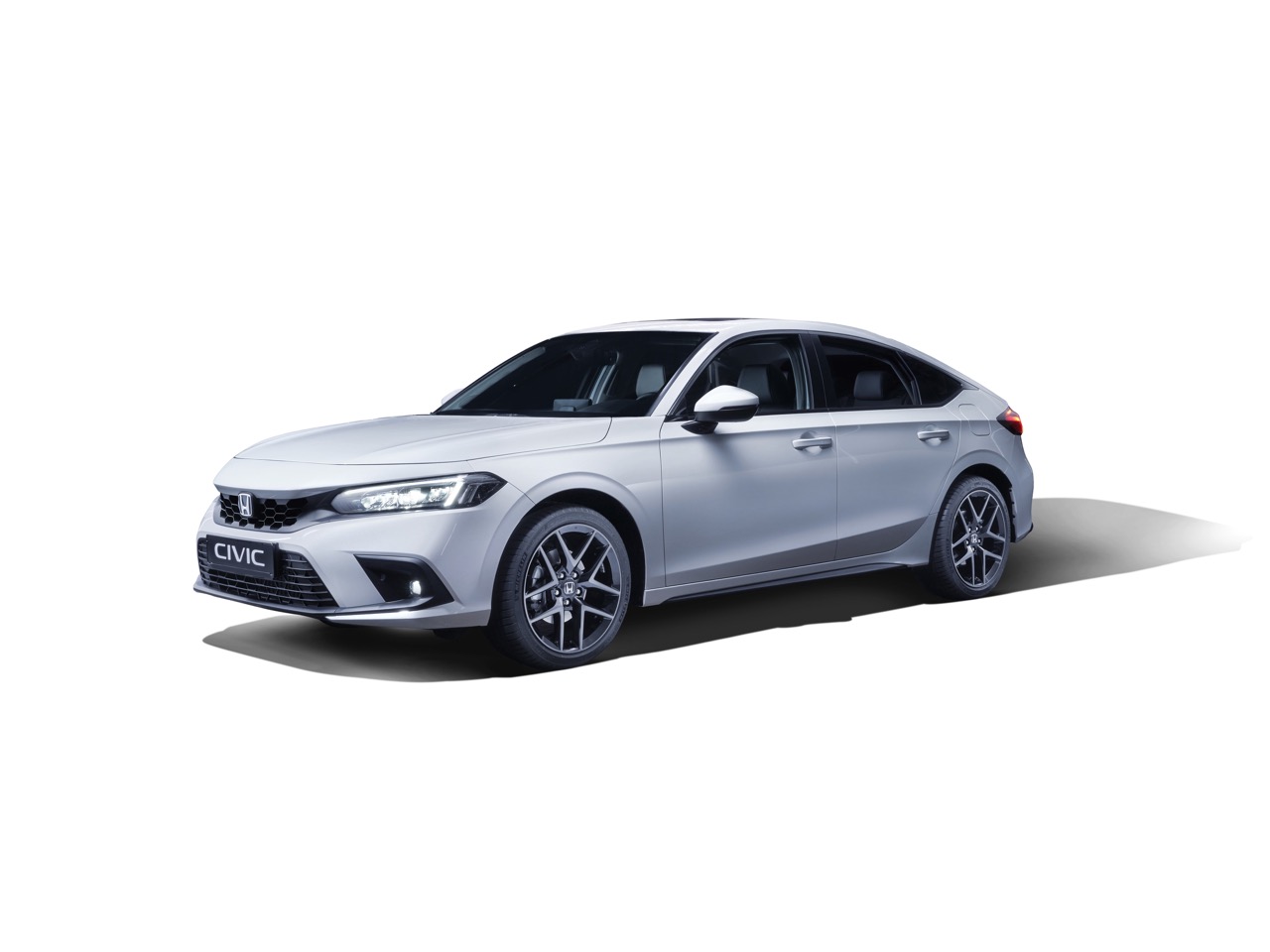 Power/Torque: 124PS/174Nm
Power/Torque: 124PS/174Nm
Acceleration (0-100km/h): 9.1 seconds
Top speed: 200km/h
Fuel economy (NEDC): 56.5mpg (5.0l/100km)
CO2 emissions: 117g/km
Vehicle weight: 1,198kg
HONDA CIVIC HYBRID (2022)
Since its first launch in 1972, Honda has positioned the Civic as "the people's car of the world". Today, with 50 years of heritage and more than 27.5 million units sold in 170 countries, the 11th generation Civic represents the modern evolution of this classic model, continuing the "silent" and elegant design shown by Honda models launched in Europe in recent years. This 11th generation Civic is the third model equipped with a hybrid system, the previous two generations are the seventh generation (2003) and the eighth generation (2006).
At the heart of the new Civic's hybrid system is the e:HEV powertrain, which comprises a 2.0-litre direct-injection Atkinson cycle petrol engine, two compact and powerful electric motors, a high-energy-density lithium-ion battery, a new power control unit and an intelligent power unit. Together, the system produces 135 kW of maximum power and 315 Nm of torque, enabling the Civic to accelerate from 0 to 100 km/h (62 mph) in just 7.8 seconds.
This hybrid technology, 25 years in the making, reflects Honda's commitment to creating a power unit that combines the instantaneous response of an electric motor with the long range and refinement of a petrol engine.
CO2 emissions are as low as 109 g/km and fuel economy is 4.7 l/100 km, according to WLTP standards. This is in part due to the engine's class-leading 41% thermal efficiency.
The Civic's powertrain operates seamlessly between different driving modes - EV Drive, Hybrid Drive and Engine Drive - without the driver having to manually switch between them.
In urban environments, the vehicle primarily uses EV Drive, achieving zero emissions and taking advantage of the instant response of electric power. When more acceleration is needed, the system switches to Hybrid Drive, using the electric motor to drive the vehicle while generating electricity from the gasoline engine.
On highways, the engine drive mode becomes the primary mode, allowing the gasoline engine to drive the vehicle directly, assisted only by the electric motor when necessary. This mode switches back to Hybrid Drive at high speeds to maximize power output.
In all driving situations, the system captures and recovers energy during braking and deceleration, especially in stop-and-go traffic to improve overall efficiency. The latest Civic is also equipped with a high-rigidity crankshaft and secondary balance shaft to reduce vibration and ensure a smooth ride.
Power/Torque: 135 kW/315 Nm
Acceleration (0-100 km/h): 7.8 seconds
Top speed: 180 km/h
Fuel economy (WLTP): 4.7 l/100 km / CO2 emissions: 108 g/km
Vehicle weight: 1,517 kg
HISTORIC HONDA HYBRIDS
Here is a list of Honda hybrid models launched in Europe over the past 25 years:
– Insight IMA (1999)
– Civic IMA (2003)
– Civic Hybrid (2006)
– Insight (2009)
– CR-Z (2010)
– Jazz Hybrid (2011)
– NSX (2016)
– CR-V Hybrid (2018)
– Jazz e:HEV (2020)
– HR-V e:HEV (2021)
– Civic e:HEV (2022)
– ZR-V (2023)
– CR-V e:HEV / e:PHEV (2023)
HONDA ZR-V (2023)
Honda’s latest model, the ZR-V, is a stylish and powerful C-segment SUV that slots between the HR-V and CR-V, offering a refined exterior, a high-quality interior, and an exciting and comfortable driving experience.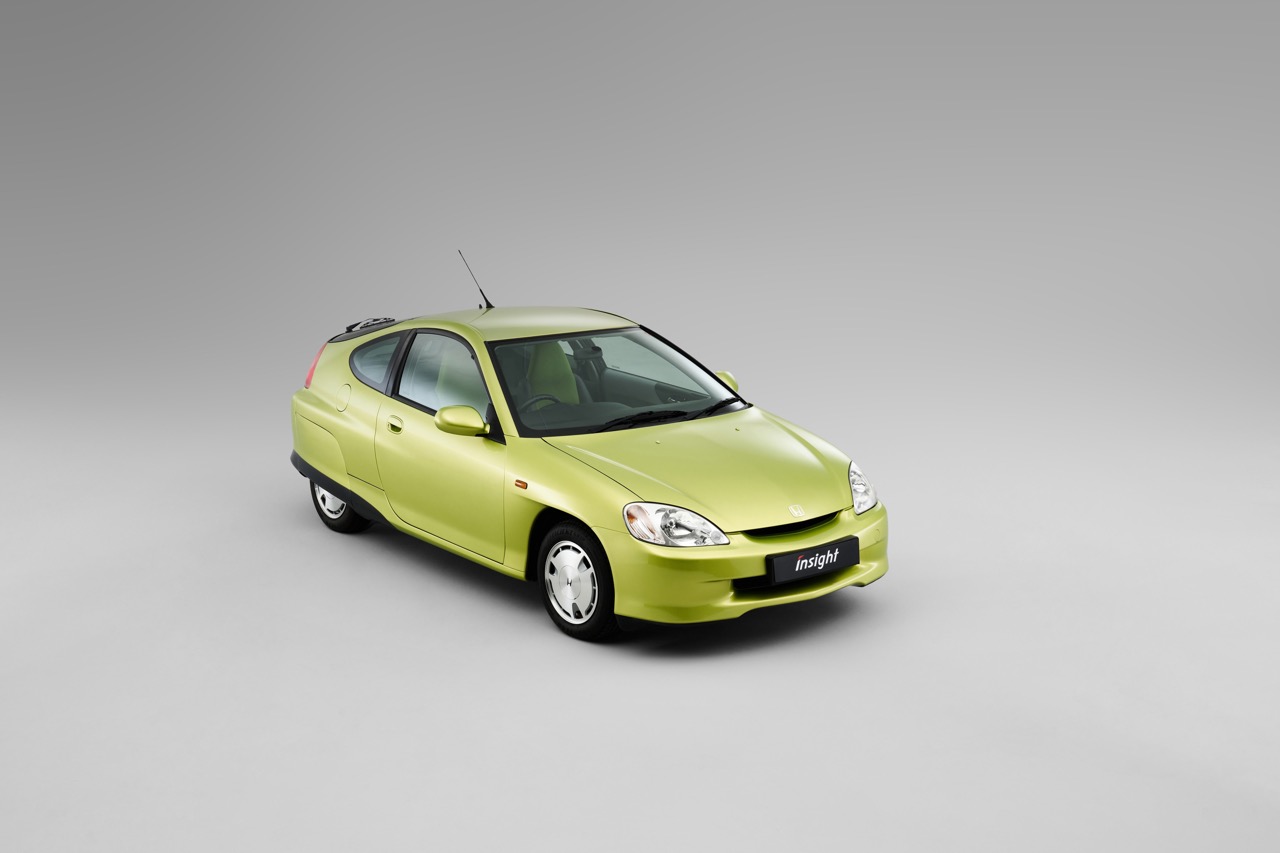 At the heart of the ZR-V’s appeal is Honda’s acclaimed e:HEV hybrid system, which blends exceptional performance and efficiency for a wide range of road environments, from highways to country roads.
At the heart of the ZR-V’s appeal is Honda’s acclaimed e:HEV hybrid system, which blends exceptional performance and efficiency for a wide range of road environments, from highways to country roads.
The ZR-V is equipped with a 2.0-liter four-cylinder direct-injection engine that works in tandem with two electric motors to deliver the thrilling performance of a sports hatchback. The hybrid system seamlessly switches between EV, Hybrid, and Engine Drive modes, optimizing performance and fuel efficiency.
In urban environments, the ZR-V primarily operates in EV Drive mode, delivering zero emissions while taking advantage of the responsiveness of electric drive. When more acceleration is needed, the system switches to Hybrid Drive mode, using the electric motor to propel while the internal combustion engine generates electricity. At constant high speeds, the vehicle operates in Engine Drive mode, with the petrol engine driving directly, assisted by the electric motor when needed. This system ensures excellent efficiency in real-world driving, with CO2 emissions starting from 130 g/km and fuel economy of 5.7 l/100 km (WLTP combined).
The ZR-V comprises a high-energy-density lithium-ion battery, a compact and efficient power control unit (PCU) and a 2.0-litre direct-injection Atkinson cycle petrol engine. The hybrid system delivers a total power of 135 kW and 315 Nm of torque, enabling the ZR-V to accelerate from 0 to 100 km/h (62 mph) in just 7.8 seconds. The advanced powertrain also features linear shift control, which enhances the driving experience by matching the engine sound to acceleration.
The ZR-V is also equipped with Honda's suite of advanced Honda SENSING technologies, ensuring a high level of active and passive safety. This includes a comprehensive airbag system, excellent all-round crash performance, and features designed to increase visibility and improve aerodynamics.
Power/Torque: 135 kW/315 Nm
Acceleration (0-100 km/h): 7.8 seconds
Top speed: 173 km/h
Fuel economy (WLTP): 5.7 L/100 km / CO2 emissions: 130 g/km
Vehicle weight: 1,589 kg Honda's continued investment and innovation in hybrid technology has enabled Civic Hybrid and ZR-V to reach new heights in performance, fuel economy and driving experience. As a car enthusiast, I think these models not only demonstrate Honda's pursuit of environmental protection and technology, but also provide unparalleled driving pleasure in daily driving. I look forward to seeing more such outstanding models that combine environmental protection and performance in the future!
Honda's continued investment and innovation in hybrid technology has enabled Civic Hybrid and ZR-V to reach new heights in performance, fuel economy and driving experience. As a car enthusiast, I think these models not only demonstrate Honda's pursuit of environmental protection and technology, but also provide unparalleled driving pleasure in daily driving. I look forward to seeing more such outstanding models that combine environmental protection and performance in the future!
Categories: vehicles
